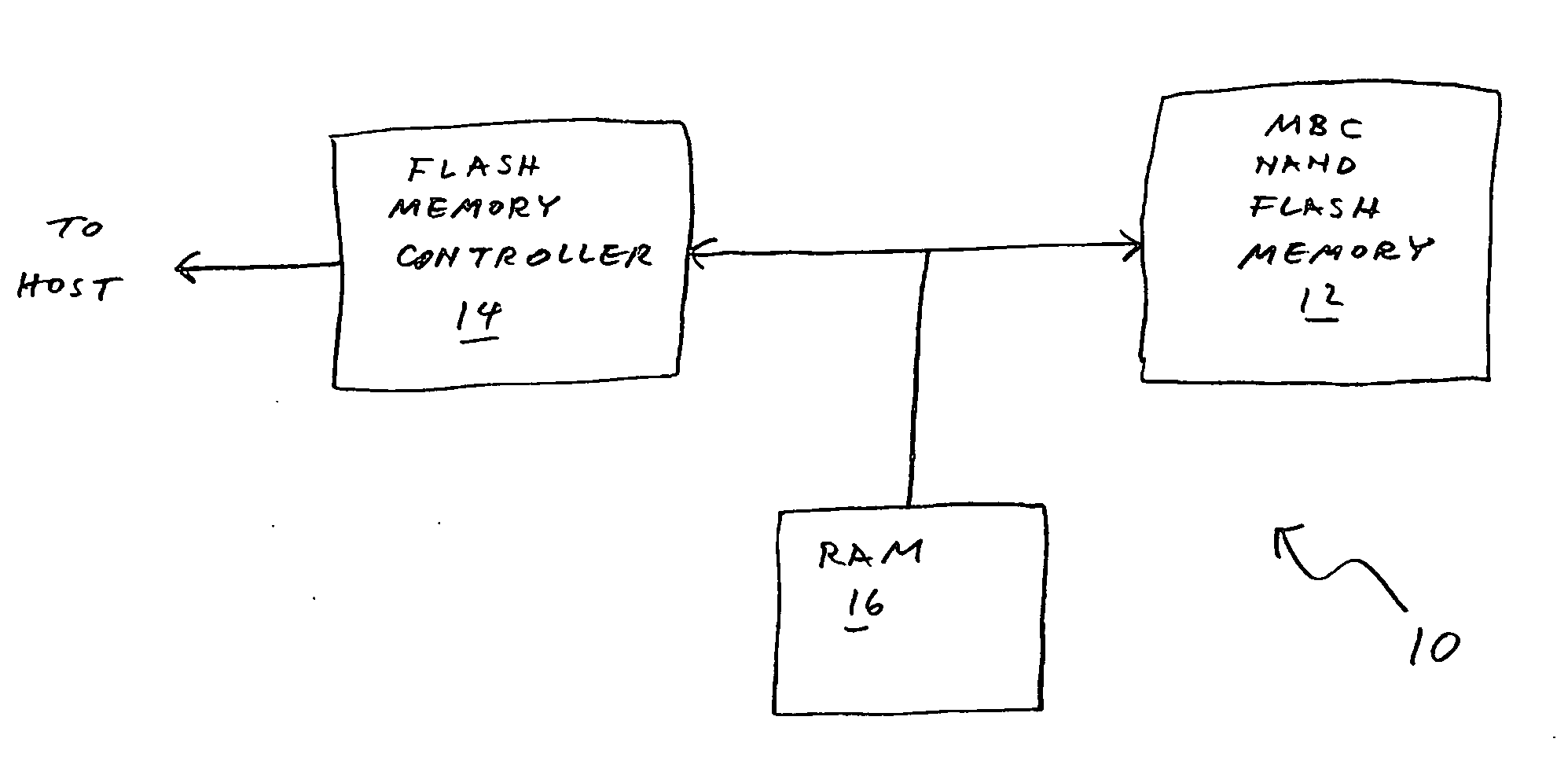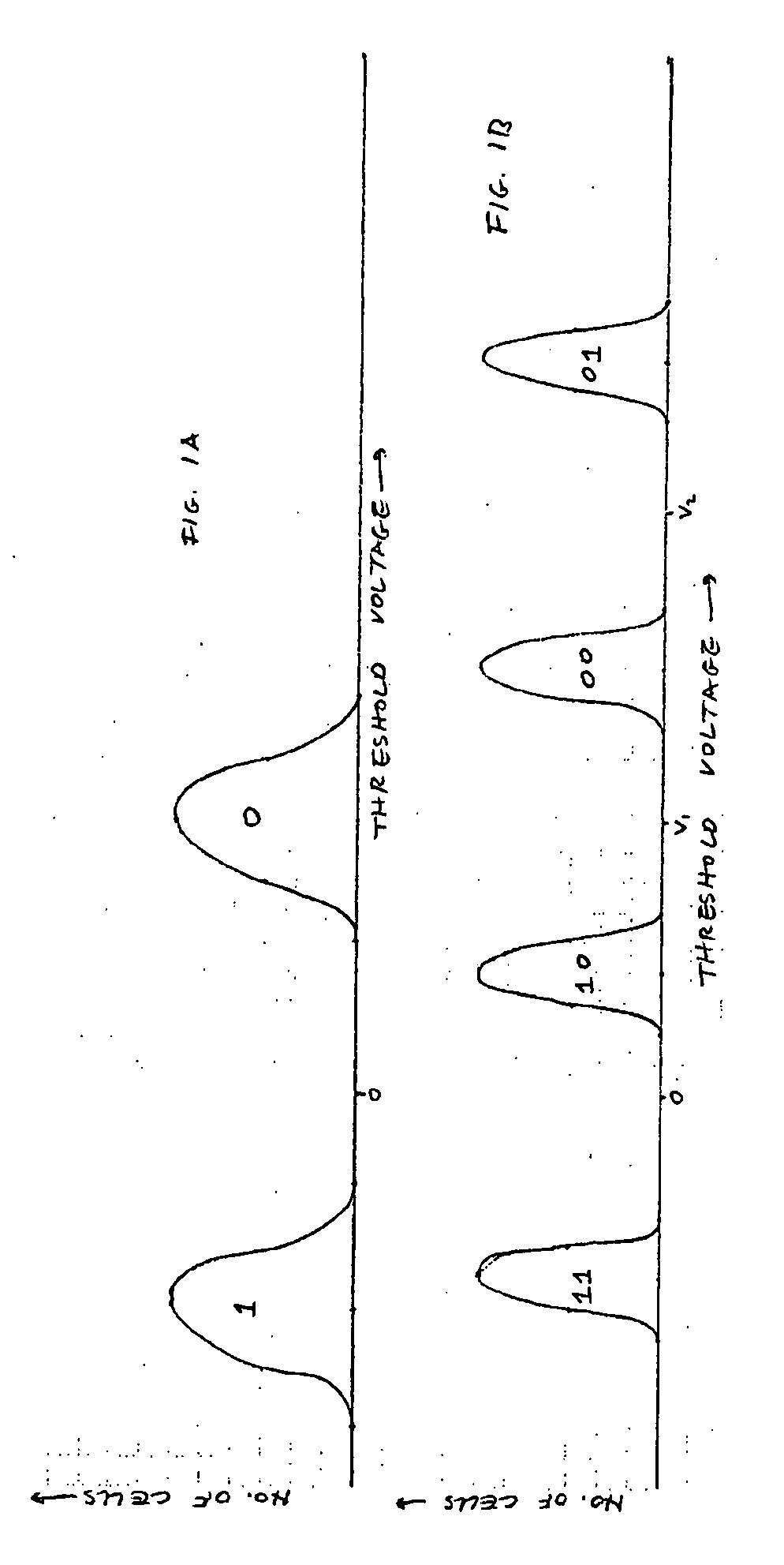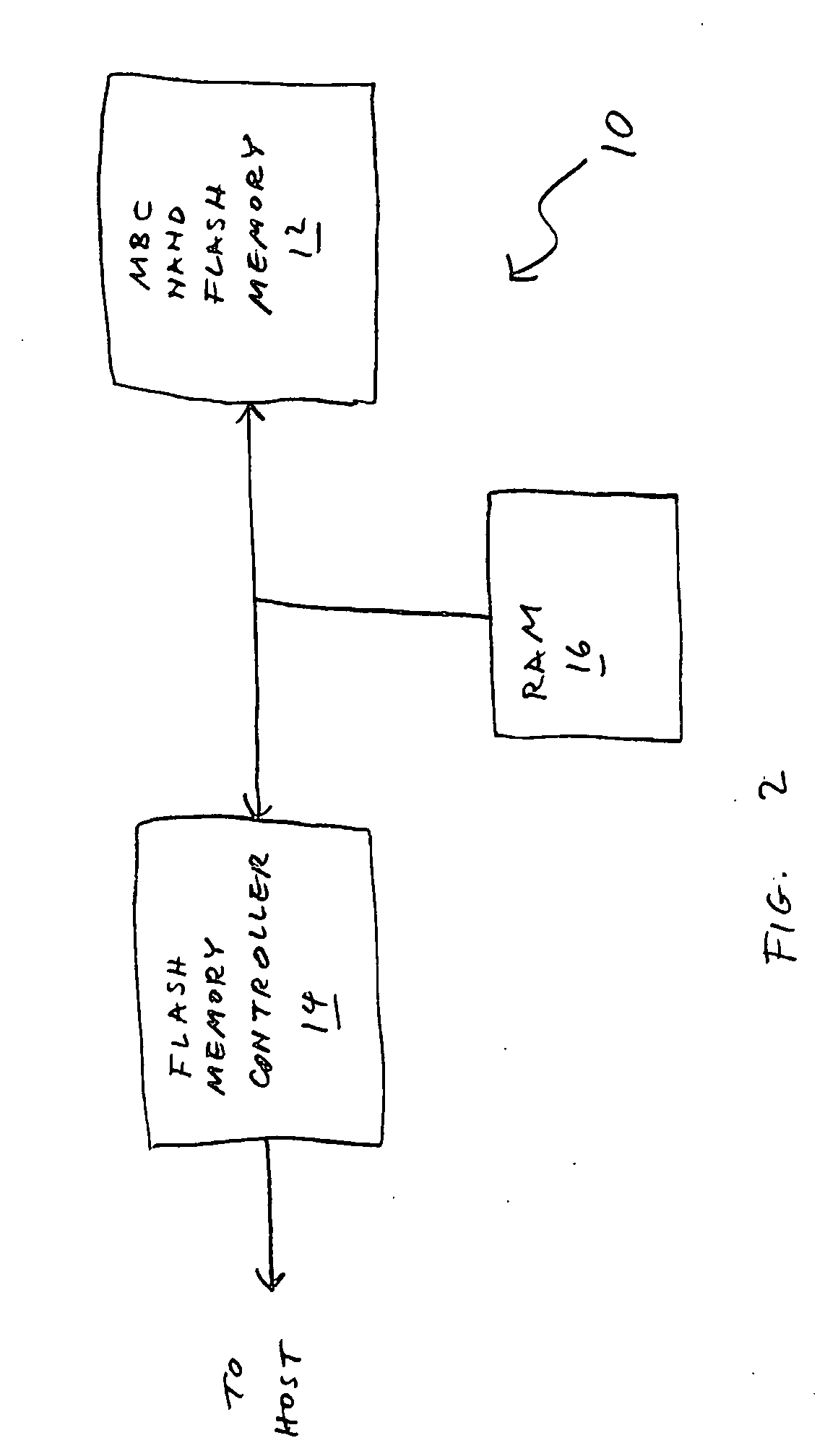Method of storing data in a multi-bit-cell flash memory
a multi-bit, flash memory technology, applied in the field of flash memory, can solve the problems of less reliability of mbc than sbc, more programming pulses and therefore more time, and achieve the effect of reducing the number of programming pulses and increasing the time required
- Summary
- Abstract
- Description
- Claims
- Application Information
AI Technical Summary
Problems solved by technology
Method used
Image
Examples
Embodiment Construction
[0032]The principles and operation of a flash memory such as a NAND flash memory according to the present invention may be better understood with reference to the drawings and the accompanying description.
[0033]The present invention provides a user of an exclusively MBC NAND flash memory device with advantages similar to those provided by a MBC NAND flash memory device that supports SBC mode. This is achieved by utilizing the page number dependency of the time of operations and using only the fastest pages for certain uses.
[0034]For the sake of simplicity let us continue to use the MBC NAND device example of the Field and Background section. In this example, even-numbered pages are faster to write and slower to read, and odd-numbered pages are slower to write and faster to read.
[0035]Suppose one desires to implement: the self-caching methods of Lee et al. using the Toshiba device mentioned above. In other words one desires to write incoming data into a relatively fast memory, and la...
PUM
 Login to View More
Login to View More Abstract
Description
Claims
Application Information
 Login to View More
Login to View More - R&D
- Intellectual Property
- Life Sciences
- Materials
- Tech Scout
- Unparalleled Data Quality
- Higher Quality Content
- 60% Fewer Hallucinations
Browse by: Latest US Patents, China's latest patents, Technical Efficacy Thesaurus, Application Domain, Technology Topic, Popular Technical Reports.
© 2025 PatSnap. All rights reserved.Legal|Privacy policy|Modern Slavery Act Transparency Statement|Sitemap|About US| Contact US: help@patsnap.com



